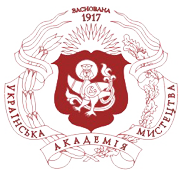TRANSFORMATION OF ARCHITECTURAL DESIGN TOOLS AND PRESENTATION METHODS: HISTORICAL AND MODERN CONTEXTS
DOI:
https://doi.org/10.32782/2411-3034-2025-37-3Keywords:
architecture, architectural design, architectural graphics, model making, digital technologies, parametric modeling, BIM, information modeling, VR, geometric a lgorithms, 3D designAbstract
The purpose of this article is to analyze the evolution of design tools and means of presenting architectural projects, as well as to determine the impact of innovative technologies on the process of form-making. The research methods include comparative historical analysis of traditional and innovative architectural tools, review of relevant scientific studies, and examination of the experience of implementing computer technologies in the design process. Research results. The study analyzes the stages of architectural design development in connection with the evolution of tools and visualization techniques. It has been established that each historical period was characterized by specific design methods that directly influenced form-making, compositional decisions, and the stylistic features of the architecture of that era. In particular, it is noted that the emergence of new tools – from physical modeling to digital simulation – not only optimized the design process but also transformed architectural language, enabling more complex spatial solutions. Conclusions. The research makes it possible to trace the evolution of architectural design methods – from hand-drawn sketches and physical models to modern digital tools. This helps to better understand the impact of technological progress on architectural practice, the transformation of approaches to form-making, project documentation, and interaction between stakeholders in the construction process. The results can be applied in educational contexts to improve methods of architectural design.
References
Ortenberg A. The Project of Architecture and the Tools of its Construction: The Shifts and Delays in the History of Drawing Media and Equipment. Proceedings of the 86th Annual Meeting of the ACSA. 1998. P. 668–677.
Ayres P. Persistent Modelling: Extending the Role of Architectural Representation. 1st ed. Routledge, 2012. DOI: https://doi.org/10.4324/9780203782545 (дата звернення: 14.04.2025).
Aksenova G., Tahrani S., Forgues D. Cultural-Historical Activity theory for introducing transformations in architecture and construction. A case study. Conference: EGOS 2014. URL: https://www.researchgate.net/publication/267332415_Cultural-Historical_Activity_theory_for_introducing_transformations_in_architecture_and_construction_A_case_study (дата звернення: 14.04.2025).
Тютіна Л. В. Еволюція пластичної мови архітектури громадських будівель ХХ століття : дис. ... д-ра філос. : 191 «Архітектура та містобудування» / Тютіна Любов Веніамінівна ; НАОМА. Київ, 2022. 226 с. URL: http://195.20.96.242:5068/kvnaoma-xmlui/handle/123456789/268?show=full (дата звернення: 14.04.2025).
Vitrvvii P. De architectura libri decem. Venetiis: Apud Franciscum Franciscium Senensem, & Ioan. Crugher Germanum, 1567. URL: https://archive.org/details/mvitrvviipollion00vitr (дата звернення: 14.04.2025).
Невідомий автор. (2018). Модель купола та частини апсиди собору Санта-Марія-ін-Фйоре [Фотографія]. upc.edu. URL: https://upcommons.upc.edu/bitstream/handle/2117/173639/Elogio%20de%20una%20carta.pdf (дата звернення: 23.06.2025).
Reyner B. Theory and design in the first machine age. Cambridge Mass : MIT Press, 1980. URL: https://archive.org/details/theorydesignin00banh/mode/2up (дата звернення: 14.04.2025).
Viollet-le-Duc E. Dictionnaire raisonné de l’architecture française du XIe au XVIe siècle. Paris : A. Morel et Cie éditeurs, 1858. URL: https://archive.org/details/raisonnedelarchi01viol (дата звернення: 14.04.2025).
Viollet-le-Duc E. Entretiens sur l’architecture. Tome premier. Paris : A. Morel et Cie éditeurs, 1863. URL: https://archive.org/details/frapn02-entretiens-sur-l-architecture-t-1-1863 (дата звернення: 14.04.2025).
Невідомий автор. (2002). Maqueta polifunicular [Фотографія]. Wikimedia. URL: https://commons.wikimedia.org/wiki/File:Maqueta_polifunicular.jpg (дата звернення: 23.06.2025).
Canaan. (2009). Maqueta funicular [Фотографія]. Wikimedia. URL: https://commons.wikimedia.org/wiki/File:Maqueta_funicular.jpg (дата звернення: 23.06.2025).
Ching F. Architectural Graphics. Taiwan : Van Nostrand Reinhold Company, 1985.
Комаров К., Казарян Б. Оптимізація розробки студентських архітектурних проєктів за допомогою технології Rhino.Inside®.Revit. Збірник наукових праць «Українська академія мистецтва». 2023. № 33. C. 17–24. DOI: https://doi.org/10.32782/2411-3034-2023-33-2.
Sutherland I. E. The Ultimate Display. Proceedings of IFIP Congress. 1965. T. 2. P. 506–508. URL: https://scispace.com/papers/the-ultimate-display-35zd3b9ucp (дата звернення: 14.04.2025).
Lombardi M., Rizzi D. Semantic modelling and HBIM: A new multidisciplinary workflow for archaeological heritage. Digital Applications in Archaeology and Cultural Heritage. 2024. Vol. № 32. DOI: https://doi.org/10.1016/j.daach.2024.e00322.
Industry Foundation Classes (IFC) URL: https://technical.buildingsmart.org/standards/ifc/ (date of access: 14.04.2025).
Olatunji O. Modelling the costs of corporate implementation of building information modelling. Journal of Financial Management of Property and Construction. 2011. № 16. P. 211–231. DOI: https://doi.org/10.1108/13664381111179206
Malewczyk M. The usage of the openBIM idea in architectural design on the example of Blender and BlenderBIM add-on. Gdańsk University of Technology. 2021. № 2 (66). P. 99–104. DOI: https://doi.org/10.37190/arc210210.
Stallman R. Free Software, Free Society. Boston : Free Software Foundation, 2022. URL: gnu.org/philosophy/fsfs/rms-essays.pdf (дата звернення: 14.04.2025).
Moult D. The ethical implications of OpenBIM. URL: https://thinkmoult.com/ethical-implicationsof-openbim.html Дата публікації: 25.03.2019 (дата звернення: 14.04.2025).
The Edge/PLP Architecture. URL: https://plparchitecture.com/the-edge/ (дата звернення: 14.04.2025).
Cilento K. Al Bahar Towers Responsive Facade / Aedas. ArchDaily. 2012. 05 Sep. URL: https://www.archdaily.com/270592/al-bahar-towers-responsive-facade-aedas (дата звернення: 14.04.2025).
Давидов А., Нестеренко В. Переваги та перспективи використання Rhino.Inside. Вісник Національної академії образотворчого мистецтва і архітектури. 2024. № 2. С. 12–16. DOI: https://doi.org/10.32782/naoma-bulletin-2024-2-2 (дата звернення: 14.04.2025).
Schaefer M. Designing in VR. URL: https://www.mattschaeferdesign.com/designing-in-vr (дата звернення: 14.04.2025).





